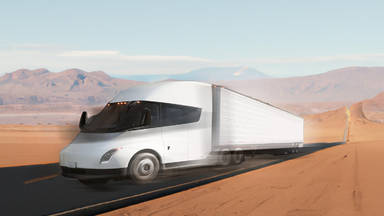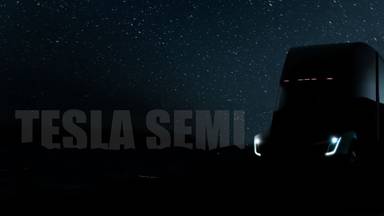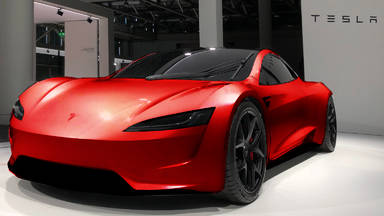
Elon Musk launched the Starship idea for several years at the beginning Starship was simply an animation that seemed completely unrealistic and unreasonable, but just last month SpaceX successfully flew SN15 at 10 kilometers altitude and landed the behemoth using their extravagant belly-down maneuver. There is still a long way to go in terms of reaching orbit and finally Mars, but as SpaceX ticks one checkbox after another, Starship's prospects look brighter every day.
Elon Musk initially revealed his ambitious launch cost for Starship in November 2019. When he said that Starship can fly for as little as 2 million per mission. He was not just talking about the Starship or the top half of the rocket, he means that the entire spaceship system, including both the Spaceship and the Super Heavy booster to launch for 2 million per mission with the payload capacity of 100 tons, which equates to just $20 per kilogram to put that into perspective.
According to Elon Musk, launching a reused Falcon 9 costs SpaceX 15 million. With a payload capacity of 22.8 tons, that means the Falcon 9 costs around $658 per kilogram, while by itself it is impressive that it does not even come close to 20 per kilogram.
How SpaceX plans to reduce cost by 30 times?
The first important factor for Starship is its full reusability. Falcon 9 is often praised for its reusable boosters, but Falcon 9 itself is not actually fully reusable. For every launch of Falcon 9, SpaceX has to produce a new upper stage from scratch and this is where most of the money goes. Elon Musk says it costs $10 million to build a new upper stage.
This means that two-thirds of the cost of reusing a Falcon 9 is simply building a new upper stage, as for the remaining $5 million a significant portion of this money goes to refurbishing the Falcon 9 fairings.
However, the problem with this plan is that the fairings touch saltwater, which leads to a long and costly refurbishment process. Producing new fairings, on the other hand, costs from five to six million dollars. If the refurbishment costs only ten percent of that, we get about five hundred thousand dollars for refurbished fairings. This leaves us with four point five million dollars, of which two hundred and fifty thousand dollars go to renew the booster itself, and two hundred thousand go to fuel. In sum, it costs about four million dollars to relaunch a Falcon 9.
Starship booster is significantly larger than Falcon 9, so we will say that refurbishing the rocket costs twice as much at 500,000. When it comes to the fuel of the spaceships, the rocket is much bigger than the Falcon 9, so it will consume more fuel, right? well, yes if it used the same engines as the Falcon 9 does, but Starship is actually using engines much more advanced, called Raptor Engine.
Each raptor engine is estimated to cost 20 per kilonewton of force per flight for comparison. Each Merlin engine used in the Falcon 9 costs $117 per kilonewton per flight, so Raptor engines are about six times more cost efficient than Merlin engines.
Elon Musk claims that bringing the Starship system into orbit will cost only 900,000 in terms of fuel expenses, adding that to the Starship refurbishing cost, we get 1.4 million dollars per launch, which still leaves four million dollars that SpaceX spends on logistics and operations costs of Falcon 9.
Unfortunately, these costs would not shift too much from transitioning to Starship. The logistics and operations involved in the Starship launch and reconditioning will be more efficient than the Falcon 9 since SpaceX would not have to fish out fairings and move Starship components as much, but Starship is much bigger and all those savings will probably only take into account the size difference.
So, the miscellaneous cost of Starship remains the same as the Falcon 9 at around 4 million per launch. Adding that to the refurbishment and fuel costs, we get a total of 5.4 million dollars per launch, which is the same as 54 dollars per kilogram.
That is not exactly $20 per kilogram that Elon Musk was promoting, but it is very likely SpaceX will get there with Economies of Scale. That is just the marginal cost of Starship, it means that is how much it costs to launch a Starship after it is developed and built.
However, development and building Starships is not cheap at all, so let us take a look at how much it could cost starting from research and development. Elon Musk says that the development of Starship will cost two to three billion dollars. Given the number of "unscheduled disassembles" we have seen so far, we should double that amount to six billion dollars at today's launch rate. It would take forever for that investment to be worth it.
If we were to say that the Starship program lifespan was 30 years and that it completed 26 launches per year, we get a total of 780 launches during the program which works out to 7.7 million per launch which is obviously very expensive.
But SpaceX plans to launch Starship much more frequently than once every two weeks. In fact, Elon Musk wants to launch Starship three times a day at that rate Starship would complete 32,850 flights in 30 years. In this scenario, only $182,650 would be added to the cost of each flight at $1.83 per kilogram of payload. Three flights a day is extremely ambitious. Although rockets probably will be fired at that frequency eventually, but there is doubt it will happen with Starship. Even if possible, it probably would not happen at the start of Starship Program, and the average for the whole program would not be three flights a day.
A more realistic outlook would be Starship launching every two weeks and then ultimately building more flights a day after around 20 years, this would mean that the average during the program would likely be closer to one flight per day. At that rate, starships would complete 10,950 flights over 30 years, which equates to a cost of approximately $550,000 per flight or $5.50 per kilogram.
But we have to include the cost of building the Starships themselves; and that is actually a lot lower than you might expect due to a couple of factors.
First of all, SpaceX ditched aluminum and carbon composites generally used in rockets. Instead SpaceX chose to use stainless steel on Starships which is only a fraction of the cost. Elon Musk says that stainless steel used on Starships costs only three dollars per kilogram while carbon composites used on most rockets cost 200 per kilogram.
Starships have around 250 to 300 tons of dry mass. Of course, not all of that is stainless steel, but if we assume it is for simplicity we get about $600,000 stainless steel per rocket. Apart from stainless steel, Starship should have six Raptors and Super-Heavy booster should have 30 Raptor engines, so the Starship system will have a total of 36 Raptors of which each should cost $2 million. It means that the engines on Starship will cost a total of $72 million.
Each raptor engine can live up to 50 flights, but SpaceX plans to continue improving the raptor and eventually take it to hundreds of flights. Anyway, for the first two years, what we are likely to see is Starships completing only a handful of flights before being retired.
After the first couple of years, we will actually see SpaceX build up to 10 or 20 flights to Starship before retirement. It takes between 10 and 20 years until we will see Starships complete dozens of flights before retirement, and it will not be before 20 to 30 years to see Spaceships complete hundreds of flights before being retired. So in average, each Starship only lasts about 50 flights.
This equates to 2 million per launch or $20 per kilogram of payload. Adding that to the material cost of each rocket, we get a total of $25.50 per kilogram, and finally this leaves us with maintenance and repair costs.
By combining it with the cost of construction and we get a total of thirty dollars and fifty cents for kilogram. Add another two dollars and fifty cents for administrative and miscellaneous expenses and this makes our total fixed cost around 33 dollars per kilogram.
if we add that to our marginal cost of $54 per kilogram, we get an overall launch cost of $87 per kilogram. To put that into perspective, NASA's newest space rocket launch system (SLS) is expected to cost a total of 2 billion per launch, which equates to a cost per kilogram of twenty-eight thousand five hundred and seventy-one dollars. At that rate, Starship costs only zero point three percent SLS. Even if Starship were to cost 100 times as much at $8700 per kilogram, it would blow SLS out of the park.
At the end of the day, Elon Musk has some rather ambitious goals with Starship. SpaceX has just successfully completed the first high-altitude flight test, and Elon Musk wants to conduct an orbital test by the end of this year. If Starship lives up to his ambitions, we could see Starship reach the target of $20 per kilogram towards the end of the program. However, this is probably not the case. A more realistic average cost over the duration of the program is $87 per kilogram, which is still miles ahead of everyone else.









